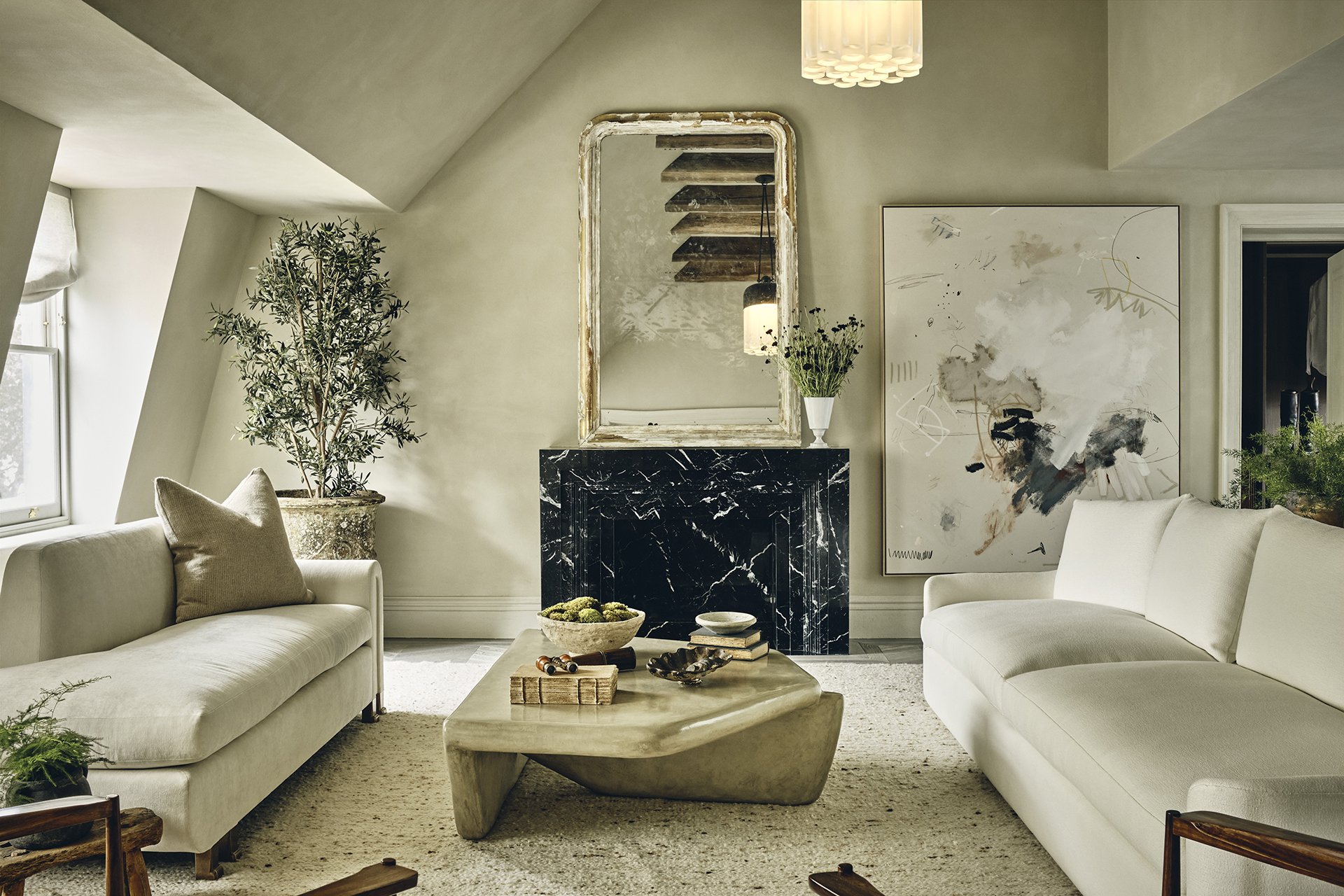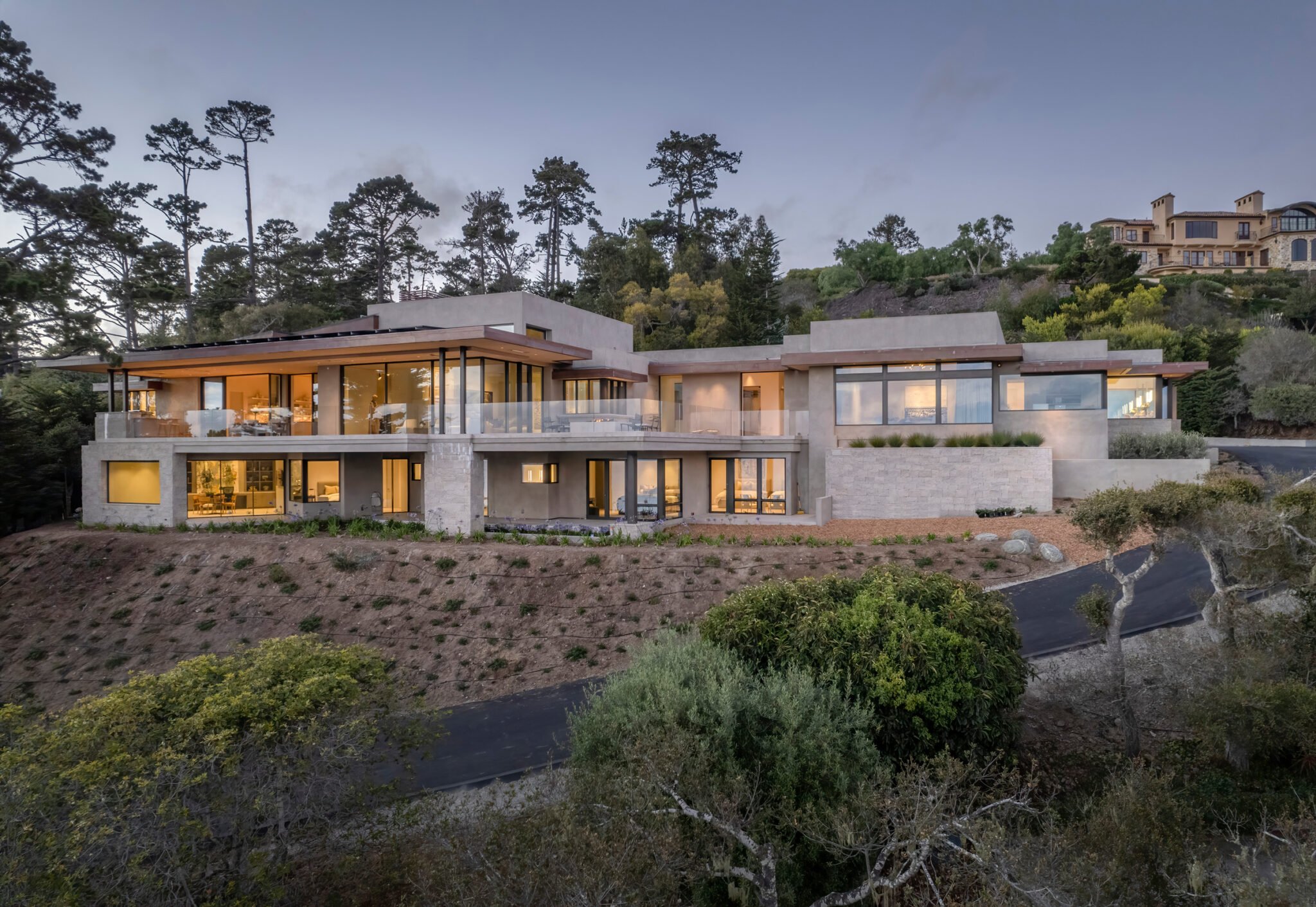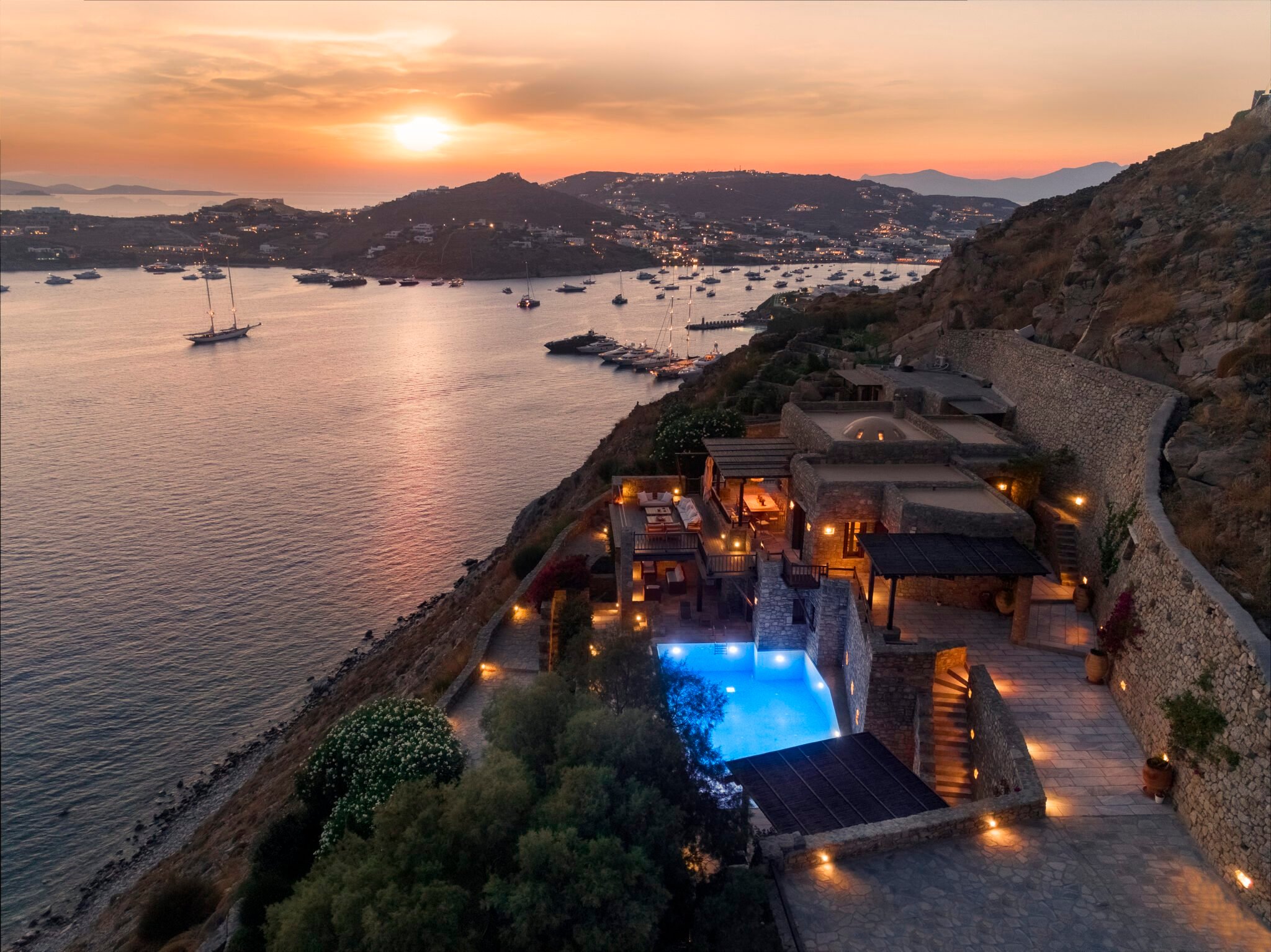Architecture and design are no longer leaving nature to the great outdoors. Instead, it’s being welcomed into our homes with elements such as living walls, natural light and organic materials, colors and textures. “There are huge psychological and physical benefits connected to healthier, greener homes,” says Edo Mapelli Mozzi, founder of London-based property and design practice Banda.
“Many studies prove that access to, and even a view of, nature can do wonders for our well-being and mental health,” agrees Samuel Pye, creative manager of London-based architectural design and development studio Echlin. He lists benefits including, “reduced anxiety, improved sleep, cleaner air and help with combatting depression.”

Inspired to prioritize your well-being through your home’s connection with nature? Here, we profile four projects that are doing just that.
1. Taking a Harmonious Approach: August Moon by SPAN Architecture
Located on the rugged coast of Maine’s Western Bay, nature-immersed August Moon was once the summer retreat of New York socialite Brooke Astor. Today, it’s a place for a young family to decompress, with every facet of the property—including the original teahouse and cottage designed by Robert Patterson in the 1960s—having been recently restored and updated.
“The symbiotic relationship between nature and the built environment—biophilia—is at the very heart of August Moon’s design,” says Karen Stonely, cofounder of SPAN Architecture. “Appreciating the surroundings and allowing their magic to flow through the home’s spaces was at the heart of what we wanted to achieve. Ensuring a sense of calm and the ability to enjoy the simple things was a pivotal inspiration.”
Set within a saddle of the landscape, the newly built main residence comprises several volumes including the master bedroom that juts out into the trees and a concealed ocean-level living area. “The house unfolds along the landscape in the same way that several small bridges through the property take people on a journey,” Stonely says. “Nature gave us the most wonderful tools—it was just a question of how to lace it throughout our designs.”

2. Creating Tranquil Opulence: Penthouse 09 by Banda
“As soon as you walk into the space, your shoulders drop and you feel relaxed,” says Banda founder Edo Mapelli Mozzi of the multidisciplinary property practice’s latest project. Located in London’s Notting Hill, this light-filled, fifth-floor penthouse overlooks a garden square and offers an additional 2,300 square feet of outdoor space through its private roof terrace.
Inside, Banda Design Studio used a calming palette of natural materials, textures, and colors. Along with earthy hues and plantings of moss and olive trees, the walls are finished in a finely textured, highly sustainable clay plaster. “The clay is 100 percent natural and non-toxic,” says Mapelli Mozzi. “Its moisture and temperature-regulating properties contribute to the health and comfort of the environment.”
The tranquil, contemporary space also includes a nature-inspired snug with a green mohair sofa and sage-colored fine wool on the walls. “We’ve thought long and hard about how families want to live right now, especially following periods of isolation,” Mapelli Mozzi adds. “Being at one with nature at home is front of mind more than ever.”
3. Prioritizing Connection: Trancoso Pool House by Nenmar
Inside merges with outside in this pool house with guest accommodation in Trancoso, Brazil. “We wanted to revert back to the basics, to disconnect by reconnecting with nature,” says Gianluca Nencini, cofounder and director of design studio Nenmar. “In the psychology of architecture, a visual connection between the indoors, outdoors and nature can reduce stress and produce more positive emotional functioning,” he explains.
Nenmar achieved this with the use of large sliding doors that open to a mature garden filled with exotic plants indigenous to the area. Meanwhile, natural light—vital for improving mental health and well-being, Nencini notes—filters into the guest quarters through a screen made from local eucalyptus sticks. This design feature not only increases privacy but also provides an eco-friendly way to regulate temperatures and boosts the sense of tranquility.
The result? A space that “elevates the spirit and consequently the mental health of whoever is using the space,” Nencini says.
4. Unexpected Green Solutions: Knightsbridge Mews by Echlin
This redesign of a mews house in London’s Knightsbridge prioritizes nature through the introduction of light, a living wall, and natural materials. “This project is right in the heart of Knightsbridge. Previously, homes like this would have relied on nearby Hyde Park to tick the box when it comes to access to outside space,” says Samuel Pye, creative manager of London-based architectural design and development studio Echlin.
“However, with a greater awareness of the impact of nature on our mental health, we felt it was necessary for the home’s architecture to bring the outside right up to and even inside the house.” This includes an 20-foot high living wall for greenery; eight skylights to bring in natural light; houseplants for better air quality and a material palette that brings in natural textures.
“All these features combine to create a calming home that swaps traditional glamour for a sanctuary-like aesthetic,” Pye says. “That, to us, is the modern feeling of luxury.”
This story originally appeared on Luxury Defined by Christie’s International Real Estate.






